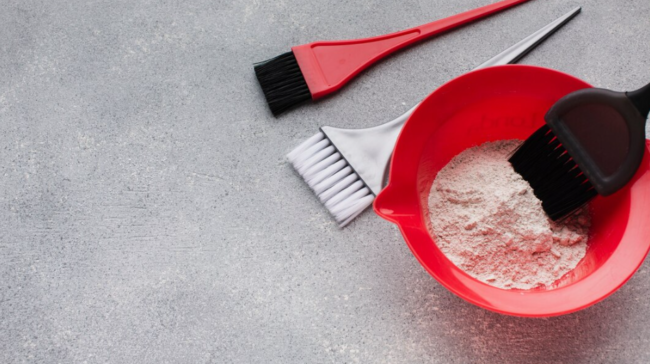
DIY Hair Color Have you ever opened DIY Hair Color box and been drawn in by the allure DIY Hair Color of a striking new color without having to pay professional prices? Unquestionably, DIY hair coloring is enticing since it allows for creative freedom and fast fulfillment. To be honest, though, changing your hair at home isn’t always an easy task. A few potential problems are patchy color, brassy tones, and terrible hues that deviate greatly from the image on the package. Adventurers in hair color, do not fear! If you steer clear of the most typical blunders, you can turn your bathroom into a successful hue-shifting paradise. This comprehensive book explores the “don’ts” of do-it-yourself coloring, enabling you to attain salon-quality results without the hassle of visiting a salon. Now put on your gloves, ignore your worry, and let’s start our adventure towards vivid, healthy, and error-free DIY hair coloring!
DIY Color Mistakes: How to Avoid Regrets Before You Begin
There are a few important measures you shouldn’t omit before starting your DIY color job. These are the main “don’ts” to keep in mind:
1. Don’t wash your hair too quickly.
Although freshly washed hair may seem pristine, it is less color-responsive. The natural oils on your scalp serve as a barrier to keep the color in place and shield it from irritation. For best results, color your hair one to two days after your most recent wash.
2. Don’t make big changes:
Wish you could go from a brunette to a platinum blonde in a single sitting? Remain calm! It’s best to leave drastic hair color changes to the pros. Make a 1-2 tone shift to start. Select a lighter tint if you’re uncertain; you can darken it afterward. Recall that getting lighter carries more risk than going darker. See a colorist for significant changes so they can evaluate your hair and suggest a safe course of action.
3. Don’t skip the patch test:
Although it may seem inconvenient, this is essential for your protection. Before coloring, a patch test is typically performed for 24 to 48 hours to rule out any possible allergies or dye sensitivity. Put a tiny bit on your inner arm or behind your ear, and watch for any symptoms, such as discomfort, itching, or redness. Avoid applying the dye, and see a doctor if you encounter any problems.
4. Don’t select the incorrect color:
Choosing a color at random because it appeals to you could backfire. Think about your desired result, your hair color, and your skin tone. Warm-toned colors like reddish or golden blonde fit well with warmer complexions, while cool-toned hues such as ash blond or blue-black suit cool skin tones. Keep in mind that the box picture could not be a perfect match, so do some internet research or consult a friend.
5. Do not exclude the research.
Not every dye is made equally! Investigate several varieties of hair color, such as semi-permanent, temporary, and permanent. Semi-permanent and temporary colors disappear more over time and are kinder to your hair than permanent hair colors, which offer longer-lasting hair color and also demand more upkeep. While selecting a type, take into account the condition of your hair and your desired level of dedication.
You’ll start your DIY hair coloring adventure off right by adhering to these “don’ts,” which will reduce the possibility of regrets and increase the likelihood that you’ll end up with gorgeous, healthy hair that you’ll enjoy!
Common Errors in Application: Getting a Perfect Finish
It’s time to apply the hairstyle now that you’ve prepared it! To prevent application errors, keep in mind these important “don’ts” before letting your creative side run wild:
1. Don’t utilize inappropriate tools:
A silky, smooth application is ensured by having the appropriate instruments. Important things consist of:
- Brush and mixing bowl: Make sure they are easily cleaned and non-metallic.
- Brush for applicator: For bigger portions, use a wider brush and a smaller one for more accurate root treatment.
- Tail Comb: facilitates sectioning and easy application.
- Gloves: Shield your hands from irritants and stains.
2. Don’t neglect this section:
The secret to uniform color dispersion in your hair is to divide it into small sections. Secure portions with clips, then proceed slowly through each one.
3. Don’t overlook root coverage:
Give your roots extra care because they are frequently the most difficult to work with. To begin, carefully apply dye to the root area with a pointed brush. To avoid irritating your scalp, be sure to cover every square inch and refrain from oversaturating.
4. Don’t neglect the hairline.
Your ears and forehead may get unpleasant stains from stray colors. To establish a “no-dye zone,” use a barrier cream or petroleum jelly around your ears as well as your hairline. Any spills should be cleaned up right away using a wet cloth.
5. Don’t undervalue the duration of processing:
Here’s where endurance is essential! Inadequate application or an uneven color can result from rushing the process. Set a timer and pay close attention to the guidelines. Refrain from leaving the dye on your hair for longer than is advised, as this may cause harm.
Remember that the secret to a perfect DIY dye job is precise application. By adhering to these “don’ts,” you’ll be able to distribute hair color evenly, prevent unsightly stains, and guarantee that your hair remains healthy all through the procedure. Go forth now and fulfill your aspirations for hair color



